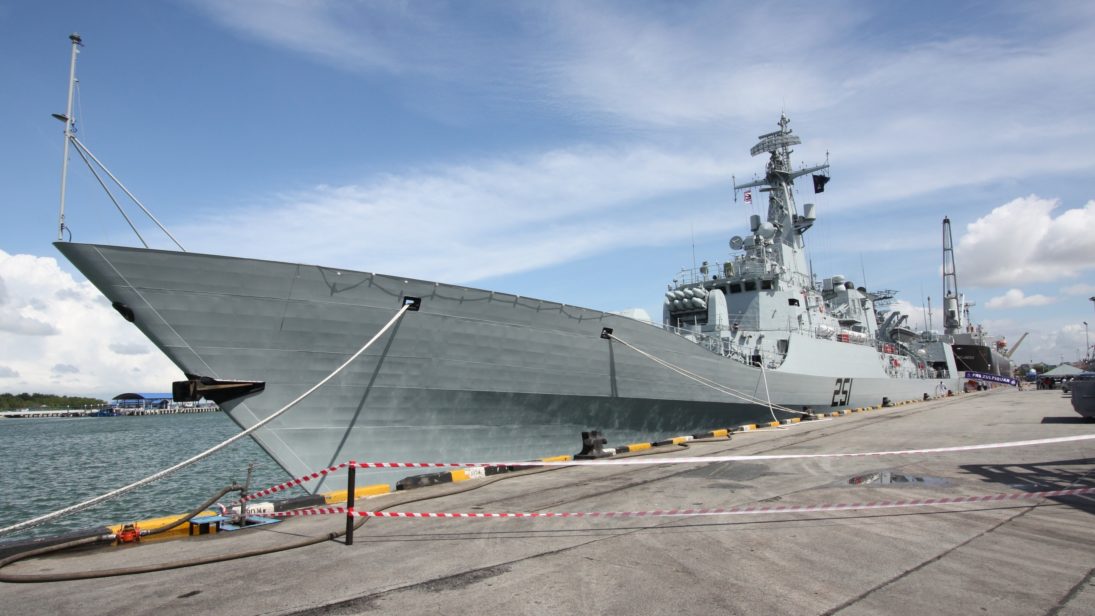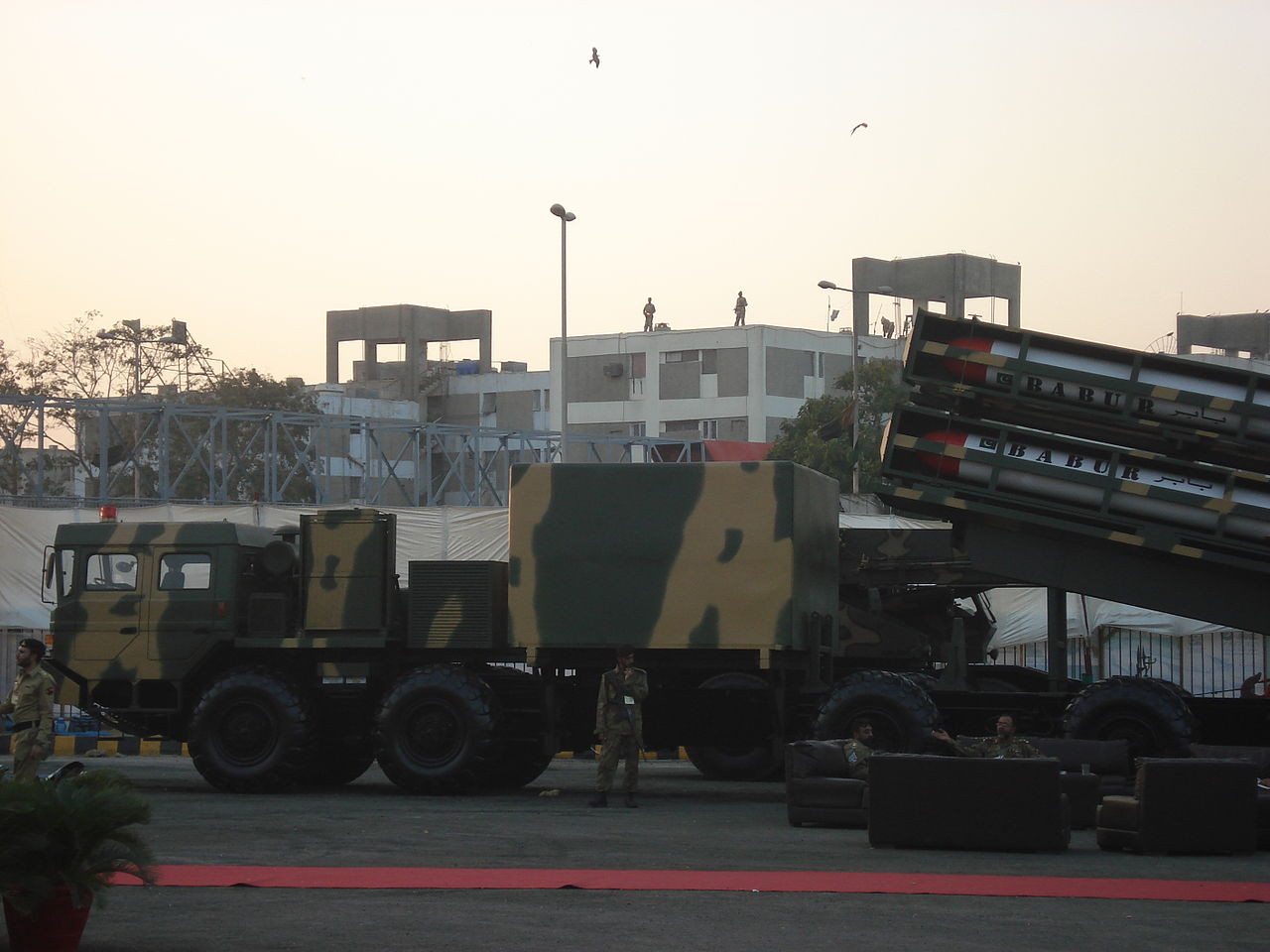
The nuclearization of India and Pakistan since 1998 has dramatically altered the security dynamics of South Asia. Despite measures taken by both countries to strengthen deterrence by beefing up delivery systems, warheads, and command and control structures, South Asia has been hostage to multiple crises with the potential to escalate into nuclear war. These crises include the Kargil conflict in 1999 and the Twin Peaks crisis in 2001-2002. Until now, however, the bilateral deterrence equation between India and Pakistan has prevented the outbreak of an all-out war. Today, scholars and practitioners alike are conscious of the pressures being placed on the escalation ladder.
In this regard, the international community and nuclear experts have raised eyebrows over Pakistan’s rapid growth in its stockpile of nuclear weapons and its deployment of tactical nuclear weapons (TNW). With the successful test of the submarine-launched cruise missile (SLCM) Babur-3 in January 2017, Pakistan took a big stride in adding a sea leg to its nuclear force composition as part of its efforts to evolve its nuclear doctrine. Islamabad’s move to the sea has generated scholarly interest among academic circles. In October 2017, The Washington Quarterly published a paper by Christopher Clary and Ankit Panda titled, “Safer at Sea? Pakistan’s Sea Based Deterrent and Nuclear Weapons Security.” The paper is an important addition to the growing literature on the implications of Pakistan’s possession of a sea-based nuclear deterrent for South Asian strategic stability.
A Usable, Unsafe, and Destabilizing Deterrent: A Summary
The authors’ paper traces the recent developments made by Pakistan aimed at bolstering its sea-based nuclear deterrent. Mindful of the significance of the Babur-3 test, the authors go on to recount and analyze the dangers associated with Pakistan’s naval nuclear ambitions.
Clary and Panda contend that Pakistan’s sea-based nuclear assets may be destabilizing. First, in the context of a conventional conflict between India and Pakistan, it would be difficult for the Indian Navy to discern whether a detected Pakistani submarine is equipped with a nuclear-armed SLCM such as the Babur-3. The authors assess that India would not know whether a given submarine it encountered carried nuclear weapons aboard it, but may nonetheless attempt to destroy the platform. This could then generate “use-or-lose” pressures for Pakistan’s land-based nuclear weapons, especially if Pakistan already believed them to be vulnerable to Indian counterforce. Second, the authors fear that the inability to keep the peacetime location of submarines secret could render an Indian first strike against Pakistani submarines in port an enticing prospect for India. Most importantly, the authors feel that India may find it tenable to target the communications facilities responsible for transmitting to Pakistan’s sea-based nuclear deterrent during a crisis.
The second risk of the sea-based leg of the triad that Clary and Panda identify pertains to non-state actors. They worry that secrecy regarding the location of Pakistan’s nuclear weapons has previously shielded the country from attacks or attempted theft of nuclear weapons. However, naval facilities containing “easily dozens of nuclear warheads” would be easily locatable and therefore vulnerable to attack. Moreover, by citing previous examples of insiders’ help in the attacks on the Mehran base and PNS Zulfiqar in 2011 and 2014, respectively, the authors illuminate another important danger—the ease with which insiders could penetrate nuclear assets within a naval facility.
In the authors’ view, Pakistan’s predicament in navigating the “always-never” dilemma will increase with the advent of sea-based nuclear assets. Rawalpindi can either ensure that its second-strike capability is usable during a crisis or that it is totally safe from unwarranted use, but not both. Thus, a credible nuclear force may have to do away with stringent controls on nuclear use, a move that is inherently destabilizing. By and large, the authors conclude that a move towards sea-based nuclear weapons on the part of Pakistan is untenable, risky, and an anathema to stability in the region.

The Veritable Risks of Sea-based Nuclear Weapons
Clary and Panda correctly assert that a move to the sea on Pakistan’s part is beset with problems that emanate out of its weapons’ employment mechanism and the susceptibility of the peacetime locations of its sea-based assets. Under Pakistan’s current command and control protocols, a nuclear warhead on a submarine is ineffective without the transmission of a code from a communications facility, which India could choose to target. Certainly, in a bid to forestall the possibility of losing command, control, and communication infrastructures, Pakistan may feel forced to use its nuclear-capable SLCMs rather than virtually lose them. Thus, Clary and Panda are right in asserting that it may become increasingly difficult for Pakistan to maintain its existing command and control protocols for its sea-based assets. Given that pulverizing command, control, and communication appears to be the right recourse for India, Pakistan will likely tilt toward a position where it can always use the ultimate weapon, which will be destabilizing.
Both authors also rightly raise concerns regarding the risks that common knowledge about peacetime locations of sea-based assets entail. Despite Pakistan’s recent counterterrorism success, non-state actors still pose a threat to Pakistan. Apart from the dangers of a decapitation strike, there are also legitimate fears that non-state actors may be able to find and target the known locations of naval facilities hosting dozens of nuclear warheads.
Strengthening the Deterrence Equation: A Critique
Clary and Panda fear that the introduction of Pakistan’s sea-based nuclear weapons is likely to aggravate crisis stability concerns during a conflict between India and Pakistan. In fact, however, the introduction of an at-sea deterrent will help Pakistan deter India from breaching the four thresholds that merit a nuclear first-use by Pakistan.
The authors are also worried that Pakistan could face a “use-or-lose” dilemma for its land-based nuclear assets if India either launches a first strike against Pakistani submarines in port or inadvertently targets a nuclear-armed Pakistani submarine. Contrary to the fears of the authors, it is doubtful that India would launch a counterforce first strike against Pakistan’s submarines in port lightly. However, even if India incapacitates Pakistan’s sea-leg of the triad, Rawalpindi’s hardened and secure underground storage facilities—some of which have already been constructed, and others of which are reportedly under construction—will help to ensure that its land-based retaliatory capabilities remain intact. Thus, it would most likely use its land-based nuclear weapons—but out of retaliation, not out of fear regarding the survivability of its land-based assets. Similarly, the inability of the Indian Navy to ascertain whether a submarine is on patrol for strategic or conventional purposes will most likely create the ambiguity needed to induce caution, thereby reducing the likelihood of inadvertent escalation.
Clary and Panda are also concerned about the survivability of the sea-based deterrent. As a new entrant in the club of naval nuclear forces, the overt development of sea-based nuclear capabilities will be Pakistan’s primary concern while it works toward maintaining a survivable force. At present, there is little evidence to suggest that Pakistan will not take steps towards improving the survivability of its naval-nuclear infrastructure. In fact, Pakistan’s history of emphasizing credibility over minimalism when it comes to deterrence indicates that efforts are likely already afoot to ensure the survivability of its sea-based assets in the long-term. Thus, the unstable elements of the current situation will not prevail for long.
Moreover, as Clary and Panda themselves argued, the fact that Pakistan’s SLCM is not likely to reach Indian cities renders it less susceptible to a counterforce strike. Arguably, in the event of a crisis, India would rather decapitate other elements of the triad that have the capacity to launch countervalue strikes.
Conclusion
Clary and Panda’s article lucidly assesses the implications of Pakistan’s development of its naval nuclear forces. It adequately highlights the likely costs that Pakistan could incur in maintaining a credible sea-leg of its triad. However, while the study highlights some of the dangers of a sea-based nuclear deterrent, it misidentifies the value it adds to Pakistan’s overall deterrence posture vis-à-vis India by exaggerating the chances of inadvertent escalation or an Indian first strike. With Pakistan’s naval nuclear forces still in their nascent stages, scholars may want to explore the link between India’s ballistic missile defense (BMD) capabilities and Pakistan’s quest for a sea-based deterrent. This is an important research agenda because the deployment of BMD would not only degrade Pakistan’s retaliatory capacity but would also reward India with nuclear superiority, both of which are likely to gravely impact the bilateral deterrence equation and stability in the region.
Editor’s Note: In an ongoing series aimed at bridging the divide between policy analysis and academic scholarship, SAV contributors review recent articles and books published by leading scholars to evaluate the latest theoretical and analytical debates on strategic issues and their implications for South Asia. Read the series here.
***
Image 1: Mak Hon Keong via Wikimedia Commons
Image 2: syednaqvi90 via Wikimedia Commons


